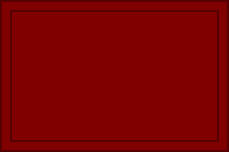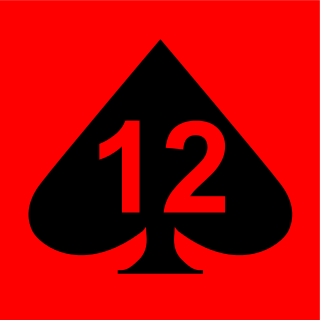
I Corps was an army corps in existence as an active formation in the British Army for most of the 80 years from its creation in the First World War until the end of the Cold War, longer than any other corps. It had a short-lived precursor during the Waterloo Campaign. It served as the operational component of the British Army of the Rhine during the Cold War, and was tasked with defending West Germany.

The VII Army Corps of the United States Army was one of the two principal corps of the United States Army Europe during the Cold War. Activated in 1918 for World War I, it was reactivated for World War II and again during the Cold War. During both World War II and the Cold War it was subordinate to the Seventh Army, or USAREUR and was headquartered at Kelley Barracks in Stuttgart, West Germany, from 1951 until it was redeployed to the US after significant success in the Gulf War in 1991, then inactivated in 1992.

The Guards Armoured Division was an armoured division of the British Army during the Second World War. The division was created in the United Kingdom on 17 June 1941 during the Second World War from elements of the Guards units, the Grenadier Guards, Coldstream Guards, Scots Guards, Irish Guards, Welsh Guards, and the Household Cavalry.

The 4th Infantry Division was a regular infantry division of the British Army with a very long history, seeing active service in the Peninsular War and Waterloo Campaign, the Crimean and Boer Wars and both World Wars. It was disbanded after the Second World War and reformed in the 1950s as an armoured formation before being disbanded and reformed again and finally disbanded on 1 January 2012.

The 5th Canadian Division is a formation of the Canadian Army responsible for the command and mobilization of most army units in the provinces of New Brunswick, Nova Scotia, Prince Edward Island and Newfoundland and Labrador; as well as some units in Kingston, Ontario. The division is recognized by the distinctive maroon patch worn on the sleeve of its soldiers.

This article describes the current structure of the Australian Army. It includes the army's order of battle and the headquarters locations of major units. Members of the Australian Army also serve within joint units of the Australian Defence Force which fall outside the direct command of the Australian Army.

The 1st Armoured Infantry Brigade was an infantry brigade of the British Army with a long history including service during both the First and the Second World Wars. It was based at Tidworth Camp. Previously, it has been designated 1st (Guards) Brigade, 1st Infantry Brigade, 1st Mechanised Brigade, and under the initial Army 2020 reforms assumed the title of 1st Armoured Infantry Brigade. Under the Future Soldier programme, the brigade merged with the 1st Artillery Brigade to form the 1st Deep Recce Strike Brigade Combat Team.

The 6th Armoured Division was an armoured division of the British Army, created in September 1940 during the Second World War and re-formed in May 1951 in the UK.

The 10th Armoured Division was an armoured formation of division-size of the British Army, raised during the Second World War and was active from 1941–1944 and after the war from 1956–1957. It was formed from the 1st Cavalry Division, a 1st Line Yeomanry unit of the Territorial Army (TA) which had previously been serving in Palestine. The division was converted from cavalry to armour and redesignated from 1 August 1941.

The 11th Security Force Assistance Brigade is a brigade of the British Army which is intended to train and assist foreign forces. In 2021, under the Future Army changes, the brigade was redesignated, formerly being the 11th Infantry Brigade & HQ South East. Prior to the Army 2020 changes in 2013, the brigade was temporarily activated for deployment to Afghanistan. Originally formed in the Second Boer War, the brigade was engaged during both World Wars.

The 12th Armoured Brigade Combat Team, formerly the 12th Armoured Infantry Brigade, is a regular brigade of the British Army which has been in almost continuous existence since 1899 and now forms part of 3rd Division.
The Order of battle of the East African campaign shows the ground forces of both sides in East Africa on the date that the Italians declared war on Britain and France, 10 June 1940 and for the British and Commonwealth forces involved in the 1941 offensive.
This is the order of battle for the ground forces involved in Operation Crusader, a World War II battle between the British Commonwealth and the European Axis Powers of Germany and Italy in North Africa between 18 November – 30 December 1941.

The 2nd Armoured Brigade was a formation of the Australian Army during World War II. The brigade was formed in July 1941, at Puckapunyal, Victoria, from Second Australian Imperial Force volunteers. It was assigned to the 1st Armoured Division in July 1941, with the intention of deploying it to the Middle East. However, it was reassigned to home defence following Japan's entry into the war, and was then transferred to the 3rd Armoured Division in October 1942. The brigade remained in Australia, undertaking defensive duties in Victoria and Queensland before being disbanded in January 1944. While it did not see any active service as a formation, some of its constituent units eventually took part in the campaigns on Tarakan, Labuan, Bougainville and around Aitape–Wewak in 1944–1945 after transferring to other brigades.
In September 1939, the British Army was in process of expanding their anti-aircraft and mobile assets. Among these new changes was the formation of Anti-Aircraft Command which was formed on 1 April 1939, and the 1st Armoured Division formed in 1937. The list below will include the British Army units, colonial units, and those units which were in the process of formation.
The following is a hierarchical outline for the structure of the British Army in 1989. The most authoritative source for this type of information available is Ministry of Defence, Master Order of Battle, and United Kingdom Land Forces, HQ UKLF, UKLF ORBAT Review Action Plan, HQ UKLF, 1990.

The 1st Division, nicknamed "Thunderbolt", was an infantry division in the Irish Army during the Second World War.














